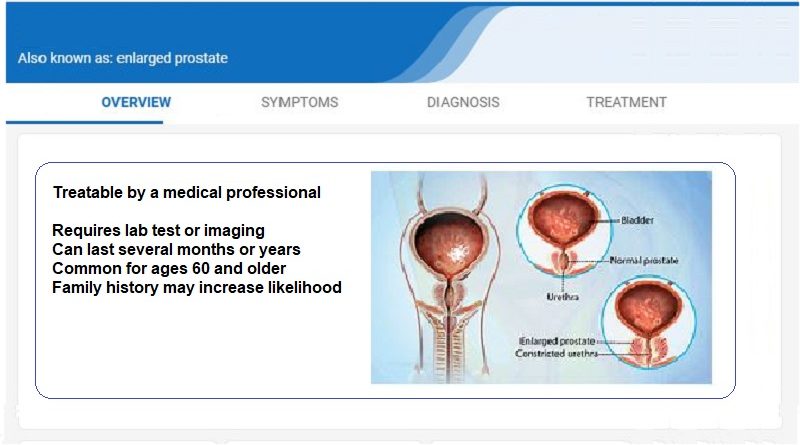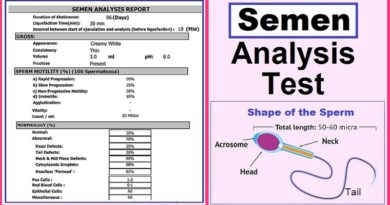Benign Prostatic Hyperplasia (BPH): definition, Causes, Symptoms, impact on daily life, Treatments and prevention
Benign prostatic hyperplasia (BPH) is a common condition that affects men as they age. It is a non-cancerous enlargement of the prostate gland, which is located just below the bladder. BPH can cause a range of symptoms that can significantly impact a man’s daily life. In this article, we will discuss the definition, causes, symptoms, impact on daily life, treatments, and prevention of BPH.
Definition of Benign Prostatic Hyperplasia (BPH)
BPH is a condition in which the prostate gland grows in size and puts pressure on the urethra, which can result in difficulty with urination. It is a common condition that affects many men as they age, and the symptoms can vary in severity. BPH is not a form of prostate cancer, and it is not typically life-threatening. However, it can cause significant discomfort and inconvenience for those who experience symptoms.
Prevalence
According to the American Urological Association, BPH affects approximately 50% of men in their 50s and up to 90% of men in their 80s. BPH is more common in developed countries, such as the United States and Europe, than in developing countries.
“Disease prevalence has been shown to increase with advancing age. The histological prevalence of BPH at autopsy is as high as 50% to 60% for males in their 60s, increasing to 80% to 90% of those over 70 years of age.” [Source]
“Benign prostatic hyperplasia, a noncancerous enlargement of the prostate gland, is the most common benign tumor found in men. As is true for prostate cancer, BPH occurs more often in the West than in Eastern countries, such as Japan and China, and it may be more common among black people.” [2]
Causes of Benign Prostatic Hyperplasia (BPH)
The exact cause of BPH is unknown, but it is believed to be linked to hormonal changes that occur as men age. Specifically, a decrease in testosterone levels and an increase in estrogen levels may contribute to the development of BPH. Additionally, genetics and lifestyle factors such as diet and exercise may play a role in the development of BPH.
“The prostate is a small gland that helps make semen. It’s found just below the bladder. And it often gets bigger as you get older. An enlarged prostate can cause symptoms that may bother you, such as blocking the flow of urine out of the bladder. It also can cause bladder, urinary tract or kidney problems. Many treatments can help BPH.” [1]
Symptoms of Benign Prostatic Hyperplasia (BPH)
The symptoms of BPH can range from mild to severe and may include:
- Difficulty starting urination
- Weak or interrupted urine flow
- Urinary urgency or frequency
- Feeling like the bladder is not completely empty after urination
- Dribbling at the end of urination
- Needing to urinate frequently, especially at night
- Pain or discomfort during urination
Impact on Daily Life
BPH can have a significant impact on a man’s daily life, especially if the symptoms are severe. Men with BPH may experience difficulty with urination, which can be uncomfortable and inconvenient. It can also lead to interrupted sleep due to the need to urinate frequently throughout the night. BPH can also cause anxiety and embarrassment for men, especially if they are unable to urinate in public places.
Diagnosis
Diagnosing benign prostatic hyperplasia (BPH) involves several steps, including a medical history, physical exam, and diagnostic tests. During the medical history, you will be asked you about your symptoms, medical history, and any medications you are taking.
The physical exam may include a digital rectal exam, where a gloved, lubricated finger is inserted into the rectum to touch and the prostate gland. This can help identify any abnormalities or enlargement of the prostate gland.
Diagnostic tests may include a prostate-specific antigen (PSA) blood test, which measures the level of PSA in the blood. A high PSA level can be a sign of prostate cancer or BPH. However, PSA levels can also be elevated due to other factors, such as inflammation or infection, and a high PSA level does not necessarily mean that a person has BPH or prostate cancer.
Another diagnostic test is a urine flow study, which measures the strength and amount of urine flow. This can help determine if there is an obstruction in the urinary tract that may be causing BPH symptoms. [3]
imaging tests such as a transrectal ultrasound or a cystoscopy may also be performed to help diagnose BPH and rule out other conditions.
Treatments for Benign Prostatic Hyperplasia (BPH)
There are several treatment options for BPH, depending on the severity of symptoms and the individual’s overall health. Some of the most common treatments for BPH include:
- Medications:
There are several medications available that can help relieve the symptoms of BPH, including alpha-blockers and 5-alpha-reductase inhibitors. - Minimally invasive procedures:
There are several minimally invasive procedures available that can help reduce the size of the prostate gland and improve urinary flow. These procedures are typically performed on an outpatient basis and have a relatively short recovery time. - Surgery:
In severe cases of BPH, surgery may be necessary to remove part or all of the prostate gland. This is typically only considered when other treatments have been ineffective.
Prevention of Benign Prostatic Hyperplasia (BPH)
There is no surefire way to prevent BPH, but there are some lifestyle changes that may help reduce the risk of developing the condition. These include:
- Eating a healthy diet rich in fruits, vegetables, and whole grains
- Maintaining a healthy weight
- Staying physically active
- Limiting alcohol consumption
- Quitting smoking
SUMMARY
Benign Prostatic Hyperplasia (BPH) is a non-cancerous enlargement of the prostate gland that can cause difficulty with urination and impact a man’s daily life. It is believed to be linked to hormonal changes and age, and treatment options include medications, minimally invasive procedures, and surgery.
SOURCES
- https://www.mayoclinic.org/diseases-conditions/benign-prostatic-hyperplasia/symptoms-causes/syc-20370087
- Benign Prostatic Hyperplasia (BPH) | Johns Hopkins Medicine
- https://www.mayoclinic.org/diseases-conditions/benign-prostatic-hyperplasia/diagnosis-treatment/drc-20370093




